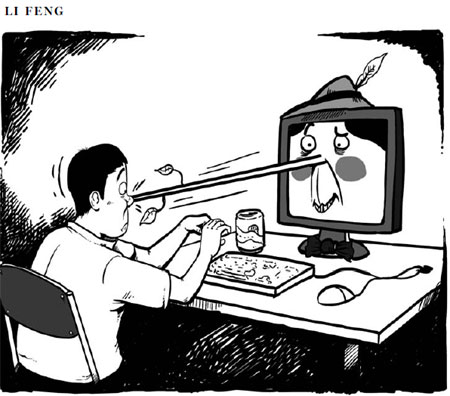 |
|
|
|
|||||||||||

Preferential policies should support low-carbon industries and service sector and contribute to social harmony
The Chinese central government will continue embracing structural tax reduction measures this year as part of its macroeconomic regulations aimed at promoting the steady and sustainable development of the national economy.
As an important component of the country's proactive fiscal policy, the structural tax cuts adopted since 2008 have played a crucial role in helping China ward off the impact of the global financial crisis and achieve a comparatively rapid and steady economic development in the context of the global economic slowdown.
It is particularly important to introduce these structural tax cuts at a time of economic deceleration, in order to effectively alleviate the tax burdens on struggling market players and boost market vigor through adjustments of the country's tax categories and rates and other taxation measures.
The adoption of structural tax cuts has caused market participants to change their production activities and made the market play a larger role in the distribution of the country's resources, both of which have contributed to the steady and comparatively rapid development of the national economy. As a market-guided regulatory measure, structural tax cuts have also played a role in promoting more reasonable investment and consumption among enterprises and individuals through the leverage of taxation.
Tax reduction was embodied in the decision made at the third plenary session of the 16th Communist Party of China Central Committee in October 2003 to reform the country's controversial tax system. It demanded the country simplify its tax system, broaden its tax base and adopt lower tax rates. Since then China has embarked on a road of tax reform characterized with structural tax cuts.
To fend off the impacts of the global financial crisis as well as the after-effects of frequent natural disasters, since 2008 China has embraced a structural tax reduction policy for four consecutive years. This has not only helped the country consolidate its macro regulations but also helped it achieve remarkable economic effects.
Of course, structural tax cuts are not the only method for alleviating the tax burden on enterprises. Currently, domestic enterprises have to bear not only their tax burdens but also assorted non-tax fees. Under these circumstances, structural tax cuts will do nothing to mitigate the assorted non-tax fees on enterprises. Besides, structural tax cuts do not mean an all-inclusive plan for raising the incomes of all residents, given that these cuts are usually targeted at certain regions or industries only and are not expected to cover all groups.
China's total tax incomes surpassed 8.97 trillion yuan ($1.42 trillion) in 2011, an increase of 22.6 percent year-on-year, which has left a certain room for the adoption of structural tax cuts. However, despite such a tangible increase, the country's tax revenues were only 19.03 percent of its GDP that year, with a per capita tax of $1,057.
Considering the 519 billion yuan government fiscal deficit and the 10 trillion yuan debts held by local governments, the country has no large space for deep structural tax cuts. All these, together with the fact that some of China's tax cuts are temporary and yet to improve their consistency, call for a scientific and well-designed layout for structural tax reduction.
First of all, a top-level tax reduction design is desperately needed and attention should be paid to strengthen its scientific nature. Any tax cuts should be organically combined with the country's measures to stabilize its economic growth, control prices, adjust its economic structure and improve people's livelihoods. Tax cuts should be made in accordance with market principles and at an appropriate time to avoid randomness and forestall any possible risks.
A targeted tax reduction principle should be embraced while adopting a unified tax policy. Any tax cuts should be focused on developing the real economy and facilitating the country's efforts to advance its economic structural adjustments and promote sustainable, low-carbon development. Preferential tax policies should favor those industries of strategic significance through the adoption of flexible and differentiated tax policies.
The country should cancel the long-established export rebate policies for high-pollution products and products with high energy and resource consumption, and it should extend preferential tax policies to low-carbon and high-tech industries as well as the labor-intensive service sector. At the same time, it should also try to include its widely anticipated structural tax cuts into management of the government budget to ensure their accuracy and strengthen their efficacy.
The author is a researcher with the Research Institute for Fiscal Science under the Ministry of Finance.